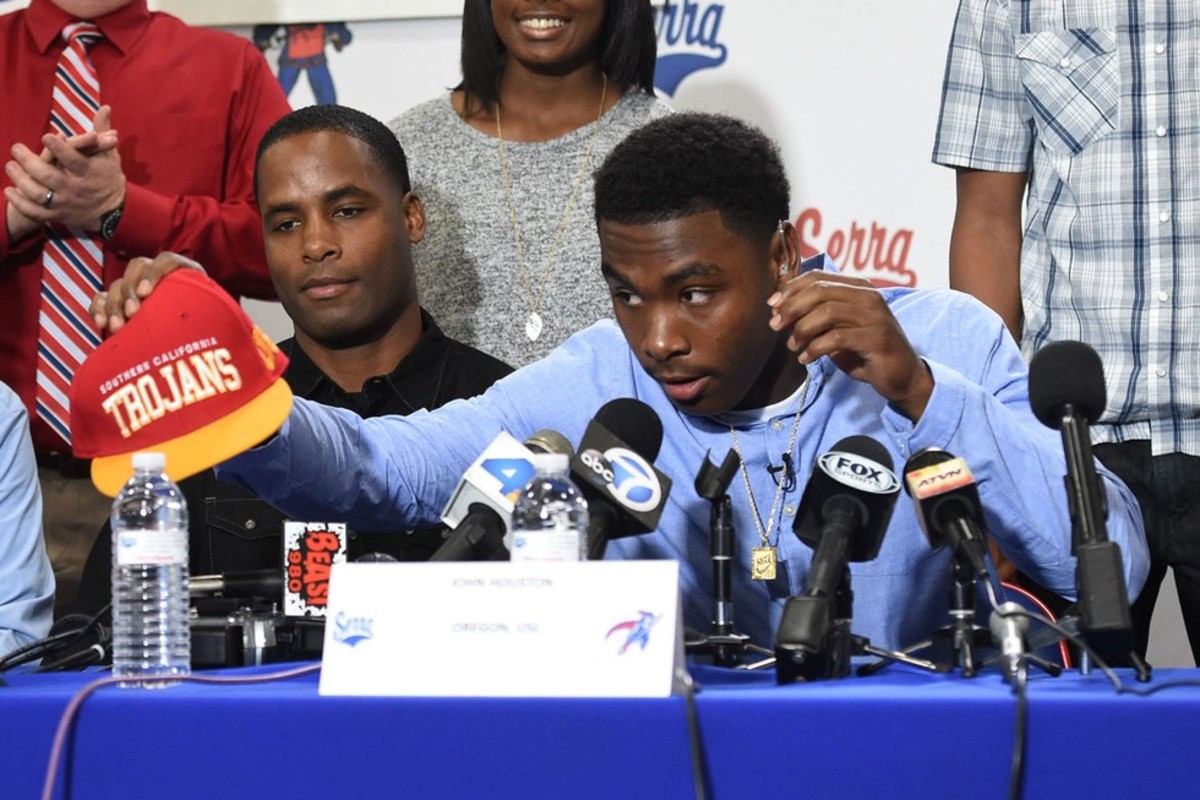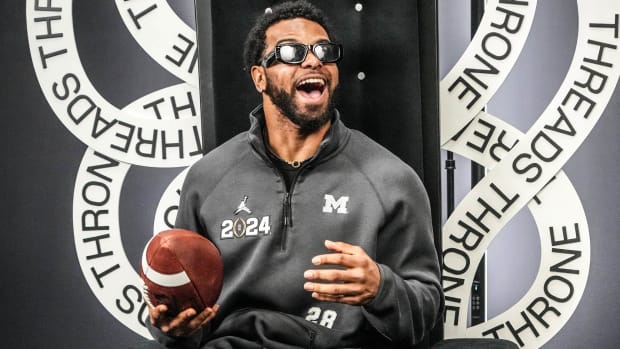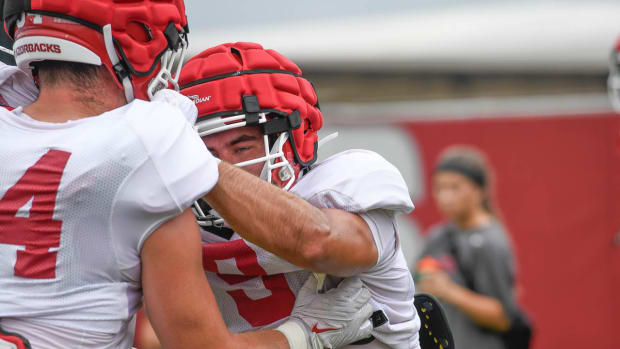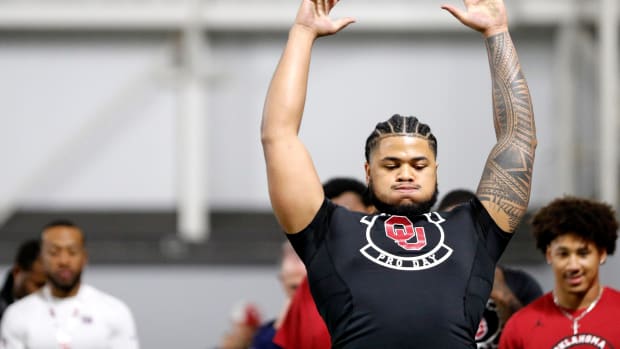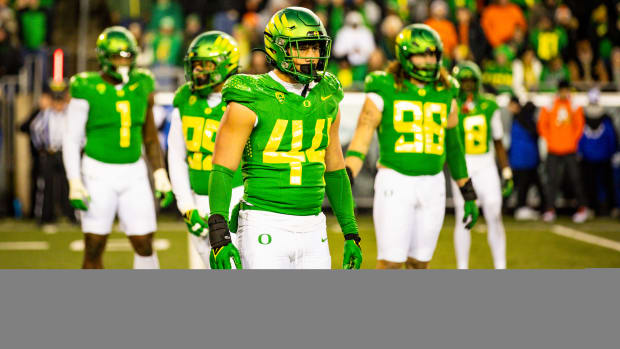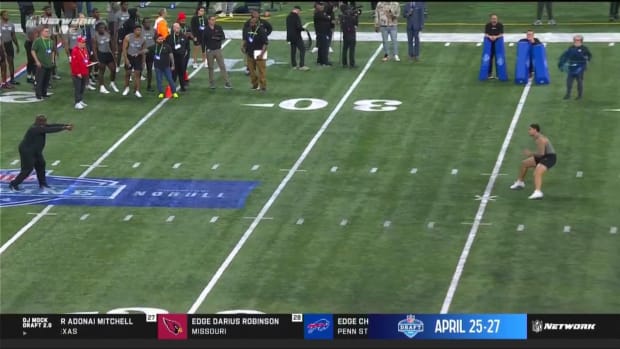As NCAA considers an early signing period for football recruiting, some coaches warn of long-term consequences
The signs of the college football recruiting scene resembling its toxic cousin, college basketball recruiting, become more apparent every year. There are professionally produced signing day videos featuring everything from live animals to drones to music videos. There's an evolution to high school super teams like IMG Academy (FL) and Bishop Gorman (NV) playing national schedules. There are non-scholastic events like The Opening, Elite 11 and 7-on-7 tournaments that have surged in importance and popularity. Every year, it feels like the high school football recruiting environment continues toward college basketball's cesspool.
In the basketball landscape, third parties control a majority of the recruitments, high school coaches have been boxed out of most decisions and academically questionable pop-up schools have become commonplace. After years of failing and flailing in its attempts to monitor the basketball recruiting landscape, the NCAA finds itself approaching a similar crossroads with football.
On Thursday, the NCAA Board of Directors will be briefed on potential sweeping changes in football recruiting. They include an overhaul of the recruiting calendar with two earlier signing days, limits on satellite camps and earlier official visits. A vote is expected to come in April and the legislation is expected to pass.
But the latest proposed changes, especially the two additional early signing periods in June of a prospect's junior year and December of their senior year, have perplexed a variety of prominent leaders around college sports. "The recruiting calendar we have is imperfect and everyone would admit the imperfections," SEC Commissioner Greg Sankey told Campus Rush. "But let's be careful before we run down a road and introduce a set of unintended consequences that don't help improve the recruiting culture at all."
NIESEN: Who are the Chicago Cubs of college football?
The entire legislative movement smacks of classic NCAA folly—well-intentioned but completely misguided. Instead of saving the college football recruiting environment from spiraling to the depths of college basketball, it feels like this legislation will push it there faster. The potential signing day in June of a prospect's junior year is the most divisive issue of the proposal. (Like most issues with college athletics, nothing is simple. The National Letter of Intent is technically under the purview of the Collegiate Commissioners Association, which would have to approve and administer the signing day changes).
The unintended consequences that concern Sankey include less ability to scrutinize recruits' academics, a precipitous drop in the amount of contact before recruits sign and a potential empowerment of third parties because there's less contact. All those would lead to ill-informed decisions and subsequent transfers. Coaches predict the June signing day will bring uninformed decisions, diminished relationships with recruits and little regard for academics. There's little proof how the NCAA will achieve its objectives of "an improved recruiting environment" and "greater transparency in the recruiting environment."
"Most smart people, when they have a big decision, they take as much time as they can," Wake Forest head coach Dave Clawson said. "They can collect as much information as possible. You are talking about 15 year olds making the biggest decision of their life and giving them less time to do it." Clawson is part of an interesting undercurrent of opposition to the legislation, coming from varied voices and universities and leagues that aren't often philosophically linked. Their concern is uniform—accidentally expediting the decline in the football recruiting culture.
Academic-minded schools like Wake Forest and Stanford are against the early signing period because they'd struggle to identify recruits with who can be admitted in June of their junior year. Ohio State Coach Urban Meyer and Alabama's Nick Saban have unintentionally joined forces and become the two most outspoken voices, as they fear kids' senior years of high school will be minimized. (Louisville's Bobby Petrino and Washington's Chris Petersen are other prominent critics of the June period).
Pac-12 Commissioner Larry Scott and Sankey of the SEC are the two major conference commissioners against the legislation, united by the belief that academics and recruiting cultural issues aren't being fully considered. "If you are just looking at it from the recruiting process, that's not what should be driving our decision," Scott said. "It should be rooted in values, academic priorities and principles and the long-term interest of the student athletes."
No supporters of the legislation can deny this decision pushes academics to the back burner and could hurt the stronger academic institutions. Let's operate under the assumption that Clawson is right about the June signing day: "Let's not kid ourselves," he said. "The early signing date will become the signing date."
Icon Sportswire via Getty Images
At places like Wake Forest and Stanford, where receiving a scholarship means much more than minimum NCAA qualification, figuring who can be admitted with such minimal data becomes a giant obstacle. Especially recruiting against schools offering kids at the end of their freshmen year and pressuring them to sign in June of their junior year. "I think it's awful," Clawson said. "How do I sign a kid that doesn't have a test score?"
Sankey points out that under the current system there are more than 10 available contact points for schools to get to know prospects and prospects to know schools. (These include contract periods in December and January and an official visit). Under the proposed system, that number could be reduced to four before the recruit can sign. While there are earlier available official visits, which includes schools' camps, the process of picking a school will inevitably be less informed.
"Having less information about a young person's academics when they sign, I don't view that in anyone's best interest," Sankey said. "Having fewer opportunities to visit campuses and meet with people and have recruiting conversations. I'm not sure that's a wise approach both ways, for universities and families."
The end result of the new legislation will be less informed decisions by prospects at an age where they may not be equipped to make them. And what happens when coaches are fired? A coordinator leaves? A coach takes a better job? There's little sense of how to handle those practical problems.
THAMEL: Will Lane Kiffin land a head coaching job?; more Coaching Carousel
From a pure football perspective, the proposed changes could neglect prospects who develop late. Saban has pointed to freshman tailback Joshua Jacobs, a late bloomer who emerged as a senior to earn a scholarship offer from the Crimson Tide this year and has rushed for 378 yards as a true freshman. Ohio State athletic director Gene Smith pointed to Darron Lee, a first-round pick of the Jets who didn't blossom until his senior year at New Albany High School near Columbus. Under the proposed system, both those players may not have ended up earning that caliber of scholarship or would have been trapped going to an inferior school based of their junior year production.
But the larger concern—and the biggest unknown—comes from the potential consequences of when the recruiting process is sped up by eight months. Inherently, a high school coach ends up with less influence because a player is already signed with a school heading into their senior year. If there's precipitously less legal contact before a player signs in June, that potentially enables third parties to reach recruits. While that could be a high school coach, it could also empower third parties who will look to get involved with top junior high players because the cycle is so sped up. Scott said the coaches have a mixed bag of opinions, but the league's athletic directors have a strong consensus because their opinions are based in academics, finding the proper fit and "higher priority values." Scott added: "It minimizes the role of high school football and will have a lot of ripple effects in the whole process of speeding things up for kids and coaches."
The evolution of college football recruiting has made it so changes need to be made. But are these the right changes? There are some good ideas, including earlier official visits, a cap at 25 signees and a proposed 10th coach. But the drastic shift in the calendar needs to be examined much more closely. Sankey points out that it's naïve to think these changes are "a net gain for everyone." Players have indicated in surveys they want to sign earlier, but is that enough justification? "One-hundred percent of young people want to drive when they're 14," Sankey said. They want to go to college when they're 16. Just because there's a notion that they want to sign early doesn't mean that we should. We need to be thoughtful before we adopt a new recruiting model."
In the end, the June signing day would likely benefit coaches more than kids and admissions offices. "It's a rule that's convenient for coaches and doesn't benefit kids," Clawson said. "I'd rather have kids de-commit than transfer."
If more transfers, more third parties and a perpetual cycle of legislation to address the unintended consequences sounds familiar, that's the spin cycle of college basketball recruiting the past two decades. There's too many smart people who see this parallel to let football recruiting follow the same path. "I don't know if I'd say it will become identical to basketball," Sankey said. "But there would be some similarities."
That's bad news for the long-term future of football.
